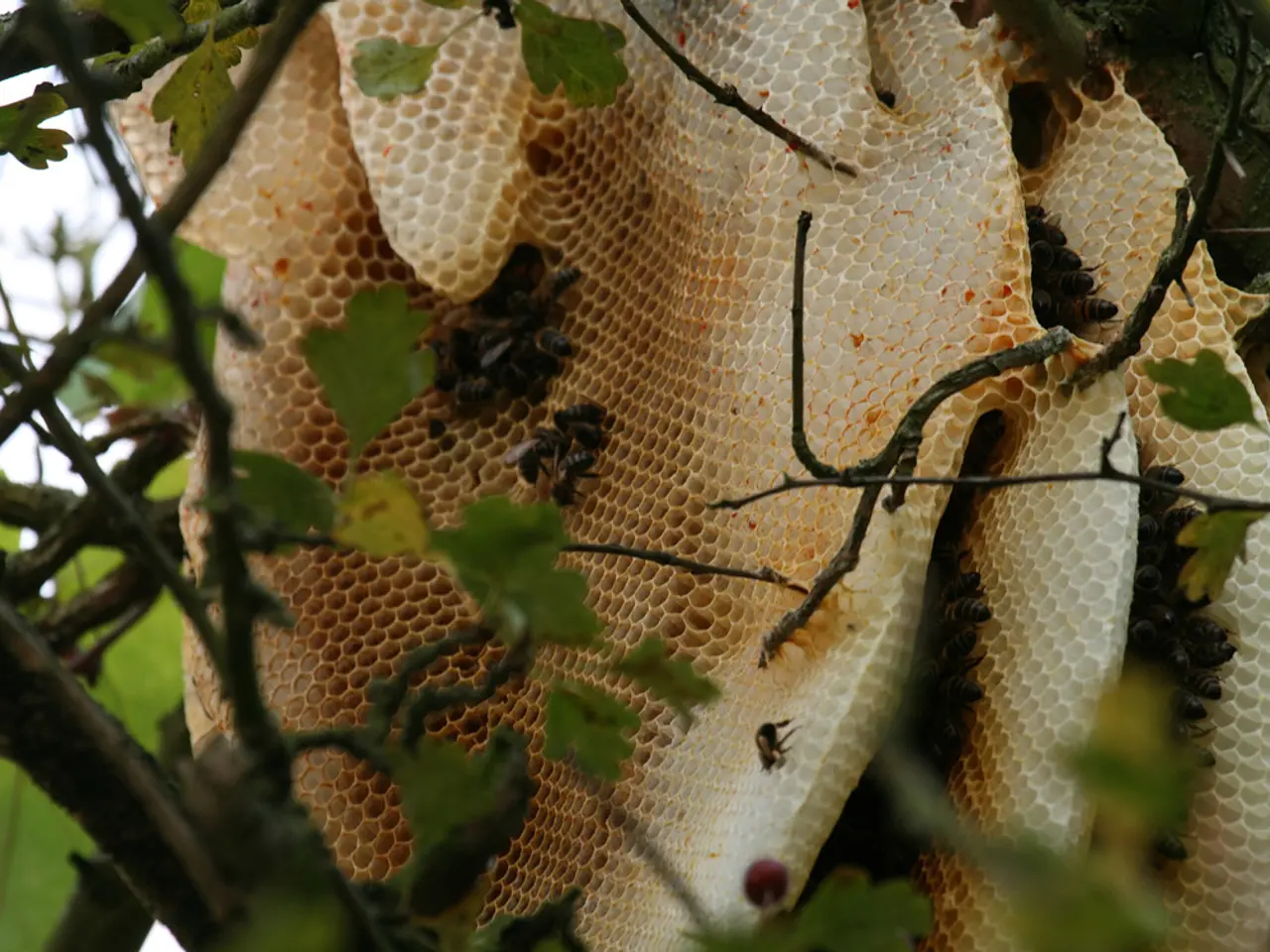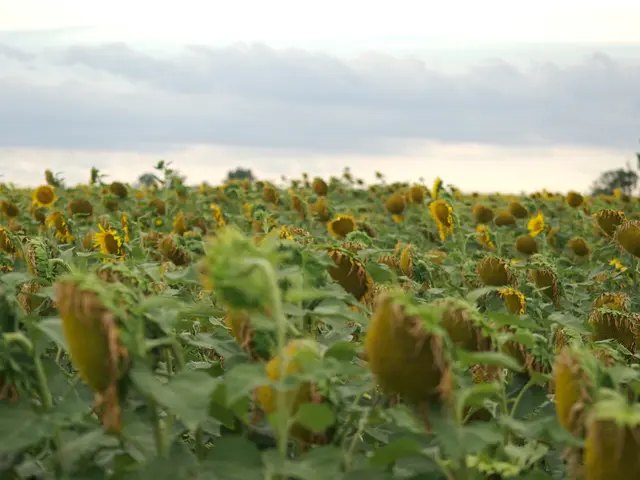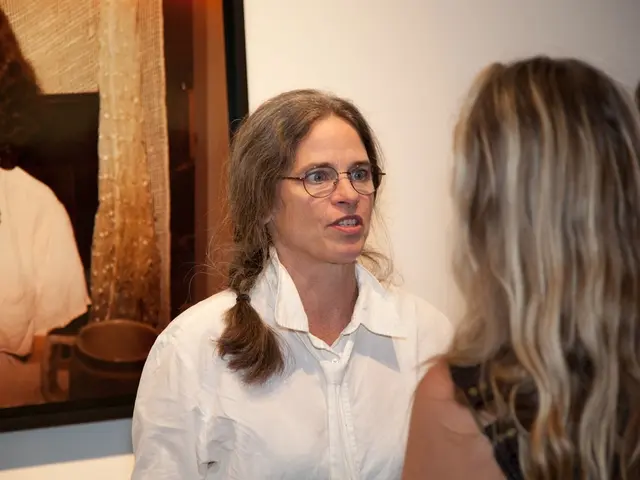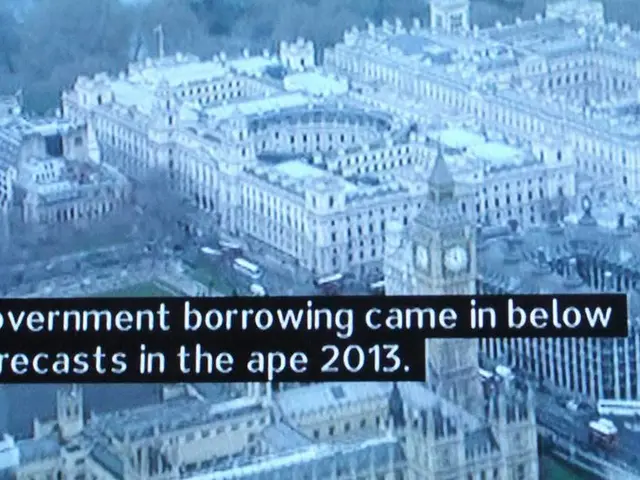Perception of Blossoms by Honeybees
In the bustling world of nature, bees play a crucial role as pollinators. But have you ever wondered how they navigate through the vibrant floral landscape that humans perceive as a kaleidoscope of colours?
Researchers have delved into the intricacies of bee vision to unravel its secrets. Unlike human vision, bee vision, due to the resolution of compound eyes, is not as sharp. However, this does not hinder their ability to find nectar-rich spots.
Just as airport landing lights guide planes, nectar guides assist bees in their quest for food. These guides, often unseen to the human eye, appear as patterns of ultraviolet light on flowers.
Bees, interestingly, can see ultraviolet light, a light range that humans try to protect from. This expanded spectrum allows bees to perceive a world beyond what meets the human eye. Furthermore, honeybees, along with most insects, can see green and blue colours well, but have difficulty seeing red. However, a surprising finding is that bees see purple especially well.
This broader colour spectrum extends to the ultraviolet range, where bees focus on ultraviolet pigments rather than the colour of petals. A monotone flower that appears plain to humans might appear bright with ultraviolet colours to bees.
Flowers have adapted to bee vision by growing ultraviolet patches called nectar guides. These guides, often invisible to us, serve as beacons guiding bees to their nectar rewards.
Bees have more than twice the number of eyes as humans, with five eyes per bee. The extra eyes, called ocelli, are single-lens eyes and although they cannot delineate form, they are able to determine light and dark, useful for bee flight control.
When planting flowers for pollinators, it's important to consider what bees can see, not just what looks good to humans. Teo Spengler, a master gardener and a docent at the San Francisco Botanical Garden, emphasises this point. By choosing flowers that are attractive to bees, gardeners can help support these vital pollinators.
Researchers such as Karl von Frisch have conducted experiments to understand how bee vision works and how bees perceive flowers. Their findings reveal that bees can see ultraviolet patterns on flowers that guide them to nectar. This understanding can help us design gardens that are both aesthetically pleasing and beneficial for bees.







